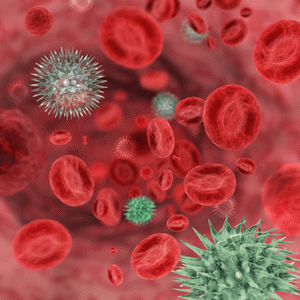Viruses can be
captured efficiently and with high precision on chromatographic surfaces using
a technique developed at the A*STAR Bioprocessing Technology Institute.
Breakthrough
technology quickly separates large proteins and viruses from their
surroundings, which improves purification of vaccines and protein therapeutics
Researchers looking to isolate individual proteins
from complex environments usually turn to chromatography, a technique where
mobile solutions of biomolecules flow through columns packed with solid, porous
particles. Separation occurs when attractive chemical forces cause the
molecules to adsorb onto the solid while contaminants pass through. Despite
major progress, however, chromatographic purification of viruses and other
large biomolecules remains challenging: their spatial heft makes it hard for
them to diffuse through columns in a reasonable amount of time.
Pete Gagnon and co-workers at the A*STAR Bioprocessing
Technology Institute in Singapore have discovered a new chromatography approach
that can boost the capacity and resolution of large-scale biological
purifications1. Instead of relying on chemical attraction, the team’s ‘steric
exclusion chromatography’ (SXC) technique exploits the physical distribution of
biomolecules and a dissolved polymer to drive adsorption at a chromatography
surface — a strategy that generates extremely fast binding kinetics and virus
purification efficiencies thousands of times greater than current techniques.
No two compounds dissolved in a solution can occupy
the same space. In addition, random movements and collisions create narrow
zones adjacent to surfaces where smaller dissolved molecules are statistically
absent. As these zones create excess free energy, materials in the solution
spontaneously rearrange themselves to reduce the excess.
Gagnon and his team exploited this effect by
dissolving proteins into polyethylene glycol (PEG), creating PEG-free zones
around the biomolecules and an inert chromatography surface. When the biomolecules
randomly encounter the surface, their PEG-deficient zones fuse together to
reduce the system’s free energy and they become stabilized on the solid
support. Because larger biological species are more affected by this
phenomenon, they tend to associate with the chromatography surface, whereas
smaller compounds are swept through the column and eliminated.
By performing the separation in special monolithic
columns that transport dissolved materials through convection, not diffusion,
the researchers were able to purify viruses with unprecedented efficiency. They
achieved binding capacities of 10 trillion virus particles per milliliter of
monolith, despite the passage time through the column being only six seconds.
Some 99.8% of E. coli proteins and 93% of DNA contaminants were removed. Virus
recovery was 90%, and critically, the viruses retained full biological
activity.
Gagnon notes that this unexpected discovery
drastically improves upon the sluggishness and low efficiency problems
currently associated with size-based chromatography methods. “Steric exclusion
chromatography provides process developers with a rapid, high-precision tool
needed to support effective and economical industrial purification.”
The A*STAR-affiliated researchers contributing to this
research are from the Bioprocessing
Technology Institute
References
- Lee, J., Gan, H. T., Latiff, S. M. A., Chuah, C., Lee, W. Y. et
al. Principles and applications of steric exclusion chromatography. Journal
of Chromatography A 1270, 162–170 (2012). | article


No comments:
Post a Comment